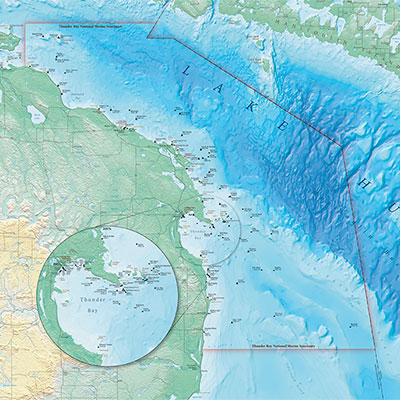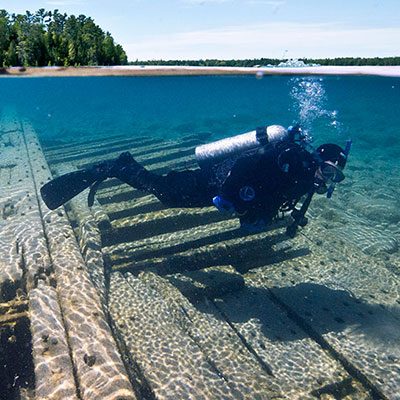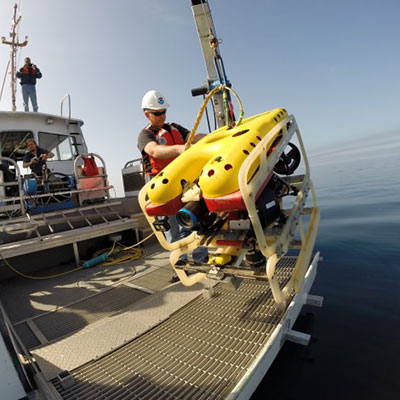Thunder Bay National Marine Sanctuary
ONMS Sentinel Site, Great Lake Region

For more than 12,000 years, people have traveled on the Great Lakes. From Native American dugout canoes to wooden sailing craft and steel freighters, thousands of ships have made millions of voyages across the Inland Seas. The last 150 years have seen enormous growth, and today Great Lakes shipping remains critical to our national economy.
However, with extraordinary growth comes adversity. Fire, ice, collisions and storms have claimed nearly 200 vessels in and around Thunder Bay, including pioneer steamboats, majestic wooden schooners and huge steel freighters. Today, the 4,300-square-mile Thunder Bay National Marine Sanctuary protects one of America’s best-preserved and nationally significant collections of shipwrecks. Over 90 shipwrecks have been located in this area, and there may be as many as another 100 yet to be discovered. These historic sites capture dramatic moments from centuries that transformed America. As a collection, they illuminate an era of enormous national growth and remind us of risks taken and tragedies endured.
Managed jointly by the National Oceanic and Atmospheric Administration (NOAA) and the state of Michigan, the sanctuary preserves our rich maritime heritage through education, research, and resource protection.
The sanctuary conducts a variety of research in an effort to better understand and protect the recreational, historical and archeological value of the region’s maritime heritage resources, evaluate existing management practices, and improve future management decisions. The sanctuary also works with a variety of partners and assists research aimed at better understanding the environmental and natural aspects of Lake Huron. These projects include real-time weather observations and understanding the complex micro-environment of artificial reefs and submerged sinkholes. Interested citizens, graduate students and principal investigators should contact the Research Coordinator to discuss their research ideas prior to launching a project. Research activities may require a permit from the sanctuary.
Learn more about the sanctuary’s conservation efforts in the 2013 Thunder Bay National Marine Sanctuary Condition Report.




